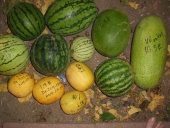Paulo, my ph is about 6.9, and while I've done some work on low ph
land, I'm not very familiar.
Hopefully someone will give you more specific advice than I can!
Have you had a lab test to get your ph result? I ask because home kits can be really innacurate, and with ph's logarithmic scale, 5.5 and 5.6 look pretty different...
It's not everyone's thing, but as a one-off it can be very useful. For instance I discovered that my phosphorus levels are off the charts, so I avoid high-phosphorus amendments like animal manure.
Paulo Bessa wrote:I am going to do this as a one time measure
Soil will start heading back to its natural ph once the soil bacteria have processed the lime, so it's an ongoing process.
NZ farmers in low-ph areas generally lime every 2-3 years, with the soil bacteria generally taking at least 6 months to make the lime available.
Paulo Bessa wrote:The bag says 40% calcium, 5% magnesium. I guess it is dolomite
I think so too, although I've only seen dolomite in powder form.
Paulo Bessa wrote:Can I add it directly to the soil[...]Will it burn the plants if it touches their leaves and stems?
Can I use the lime water {to water} indoor containers at a very diluted rate?
As far as I know, lime's safe to sprinkle dry over plants.
Dissolved lime I know nothing about.
Paulo Bessa wrote:I also guess there is a deficiency in magnesium in my soil (not sure) because some plants, especially legumes, exhibit yellow discoloration of their leaves while keeping their veins green
Sometimes it's not an actual defiency, but the ph which makes various minerals unavailable.
Liebig's got plenty to
answer for, but his 'law of the minimum' is useful
nutrient barrel
I also like these charts; it gives a good idea of the relationship between ph and nutrient uptake
mineral uptake chart



